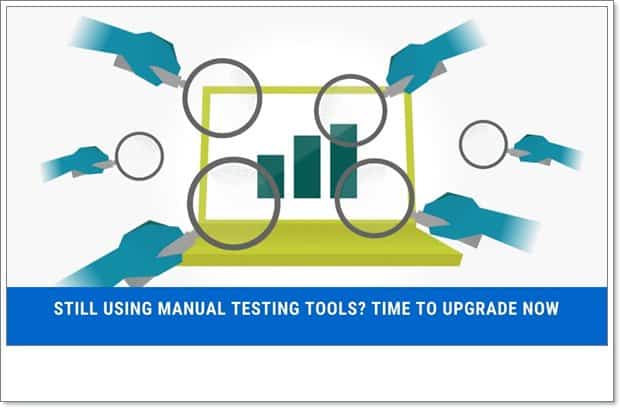Manual testing is a process in which a person tests software by assuming the role of an end-user and walking through various application workflows using the manual testing tools. The purpose is to ensure that the program accomplishes what it’s supposed to do and to detect bugs before the application is released to the public.
More than half of all tests are being run manually today, which means that for many teams and enterprises, the first step is to begin automating. This can be a difficult task. Moving from manual testing tools to automated testing without disrupting current development efforts necessitates more than just using an automation technology or hiring an automation engineer.
Manual test execution could take an excessive amount of time, depending on the product, the test case, and the number of variants to be tested. Consider manually testing the conventional ‘logging in’ action. You’d have to run the same test again and over with new data sets until you’d exhaust every possible scenario. And this would sound insane in today’s world, where we cannot even wait until an application is a download. Meaning the patience level of individuals is decreasing day by day and so there must be a way out to overcome the manual testing process as well.
So now that we have understood, we need to adopt automation, how do we do the shift?
1. Determine what you want to automate and who will do it.
Any new method has a learning curve. For companies that are just getting started with automation, there is a lot to think about, from determining which tests to automate to deciding who will perform the automating.
Do you have the required resources and skills? Is there already a testing team? Do you have the funds to hire an expert to assist with coding the changes? Or should you proceed with an existing team of manual testers? All of these are critical questions that must be addressed.
2. Explore Frameworks
Of course, the starting point for selecting frameworks is determined by what you’re testing. There are numerous online and mobile testing frameworks available.
Each has advantages and disadvantages. Selenium, for example, is extremely adaptable and open source, but it also has a reputation for being unstable. Test maintenance might be a problem.
A framework mismatch for your team will lead to big problems down the road. Make an informed decision.
3. Selecting Tools:
Getting the correct tools is critical for those venturing into the world of test automation. There are different types of tools, ranging from an outdated and soon-to-be-obsolete record and playback tools to AI-powered codeless test automation tools to full testing solutions with device labs and reporting.
Just as with frameworks, it’s critical to select something that meets your needs. Not only now, but also in the not-too-distant future. Will the tool still be available in five years? Is there a regular release schedule? What about assistance?
Finally, tools must solve your issues, use your capabilities, and interact with your current and future requirements.
4. Set Goals:
Goals such as Make Automation Work Now, Next Quarter, and Next Year provide us with direction. Be very clear about your goals when it comes to testing automation.
What does short-term success look like? It may be as easy as automating the first test case. Alternatively, running X number of tests.
Perhaps towards the end of the quarter, that aim will be more connected to detecting more bugs or having fewer escaped flaws.
How much faster can you release from there? Because, after all, isn’t that the ultimate goal? These were a few key tips that will help you transition from manual testing tools to automated testing. So the time has come to shift to automation. Automation is the future.

Leave a Reply
You must be logged in to post a comment.